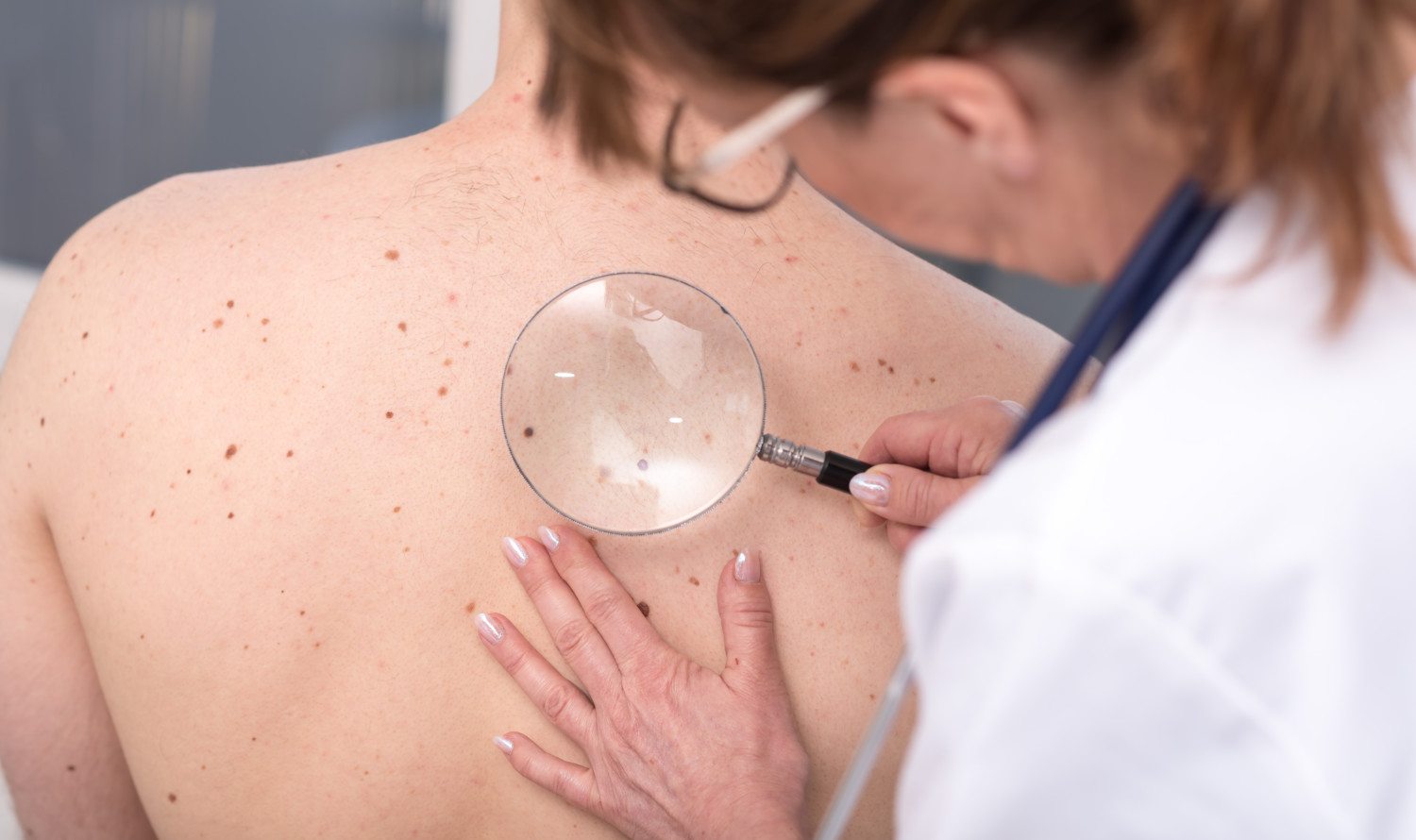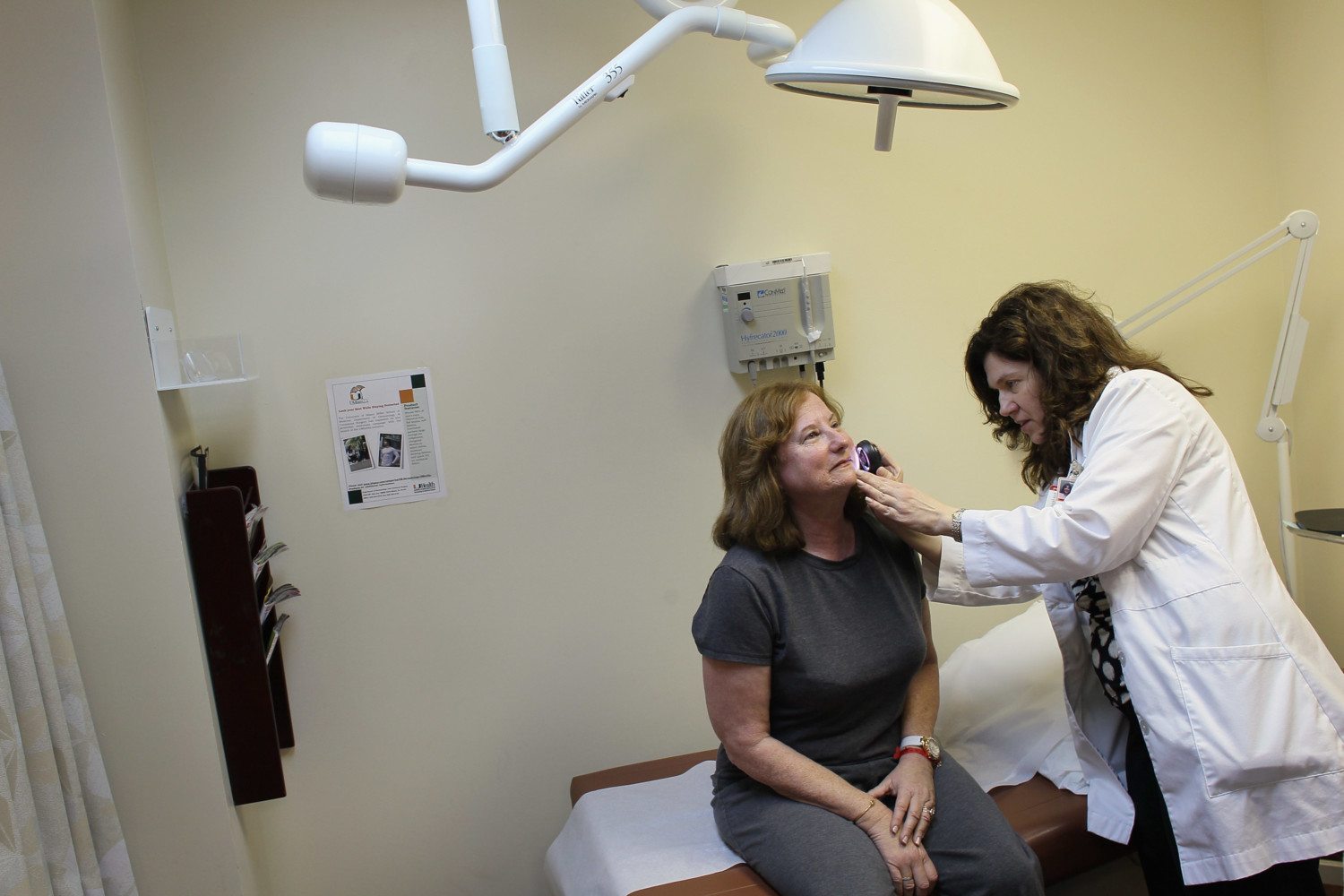How to check for cancerous moles

The stats surrounding skin cancer are all pretty terrifying. According to the Skin Cancer Foundation, one in five Americans will get skin cancer during their lifetime. And every year, over 5 million cases of skin cancer are treated. In fact, every hour, one person will die of melanoma—a skin cancer that is dangerous in its advanced forms, but nearly always curable if caught early. So how can you recognize melanoma before it spreads and becomes harder to treat?
Melanomas are cancerous growths that develop when damage to cells—usually caused by exposure to either the sun or tanning beds—kick-start genetic mutations, causing cells to multiply quickly. The tumors produced look a lot like moles and can actually develop from moles, which means keeping an eye on them can help you catch skin cancer early.
With that in mind, consider using the “ABCDE” method to regularly check for any suspicious moles.
How To Check For Suspicious Moles
You’ll want to start by showering thoroughly and making sure you have a clear view of your skin, including your scalp and the backs of your knees, neck and back. Can’t see a certain area? Grab a handheld mirror or a friend, because you’ll want to make sure you’re covering all areas.
This short video from WebMD is a great primer on how to check your skin:
Keep these tips in mind when screening your moles for skin cancer: pic.twitter.com/QDo6TaNfxR
— WebMD (@WebMD) July 26, 2017
What To Look For
Once you know how to examine your body thoroughly, you’ll want to make sure you know exactly what you’re looking for, since not all moles, brown spots or growths are dangerous. This is where the “ABCDE” method of mole-checking comes in handy, as laid out in the following tweet from Lakeside Dermatology:
Melanoma is the deadliest form of skin cancer and often just resembles a mole. Be sure to always check the ABCDE's for irregularities! pic.twitter.com/6FmQDPS4tW
— Lakeside Dermatology (@LakesideDerm1) June 1, 2017
Here’s what each initial stands for, and exactly what you should look out for, according to the Centers for Disease Control and Prevention.
A: Asymmetry
If your mole or brown spot has two very different-looking halves, whether in shape or size, you should go see a dermatologist or doctor.
B: Border
Check to see if the outline or border of your mole is irregular, uneven or undefined.
C: Color
What color is your mole? If its pigment is uneven in places or has different shades within it, get it looked at.
D: Diameter
Moles and spots shouldn’t be larger than the size of a pea or a pencil eraser.
E: Evolving
Change is a good thing, but not when it comes to moles or spots. If you notice any changes to your growths, get them checked out.
How Often Should You Check Your Skin?
Don’t worry. This entire process doesn’t have to happen on a daily basis (whew!). Experts recommend that you give yourself a solid once-over self-exam once a month, then have your doctor give you a routine check annually.
“Generally speaking, I recommend that everyone starts getting an annual body check in early adulthood,” Marc Glashofer, M.D., a skin cancer surgeon at the Dermatology Group, told Shape. “If you can vote, you should get your skin checked annually by a board-certified dermatologist.”
Put your monthly self exams and your annual doctor exams in your calendar so that you remember them regardless of what else is going in your life. Catching cancer early is one of the best ways to stop it in its tracks, so it’s worth doing a quick ABCDE check once a month.






